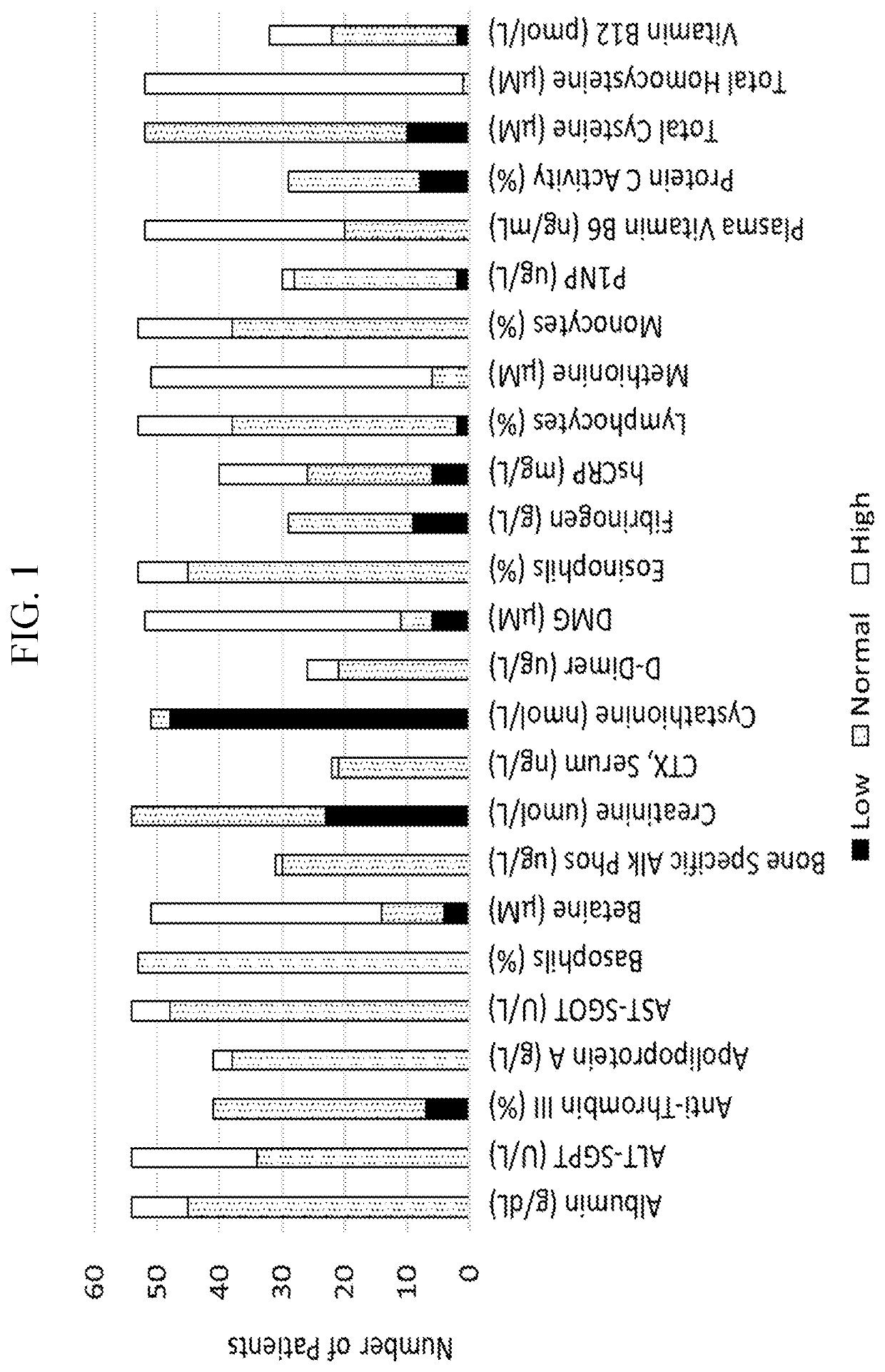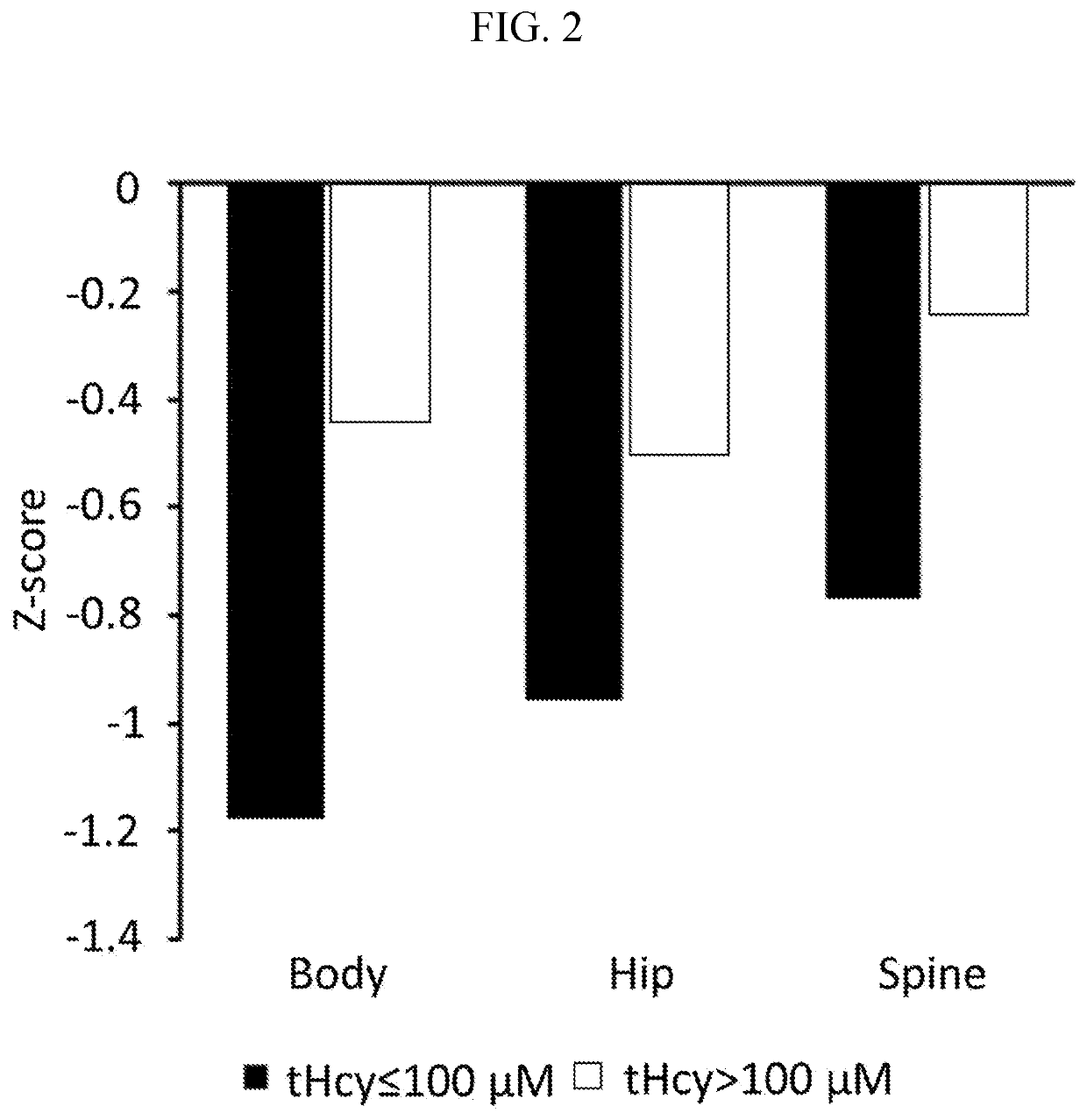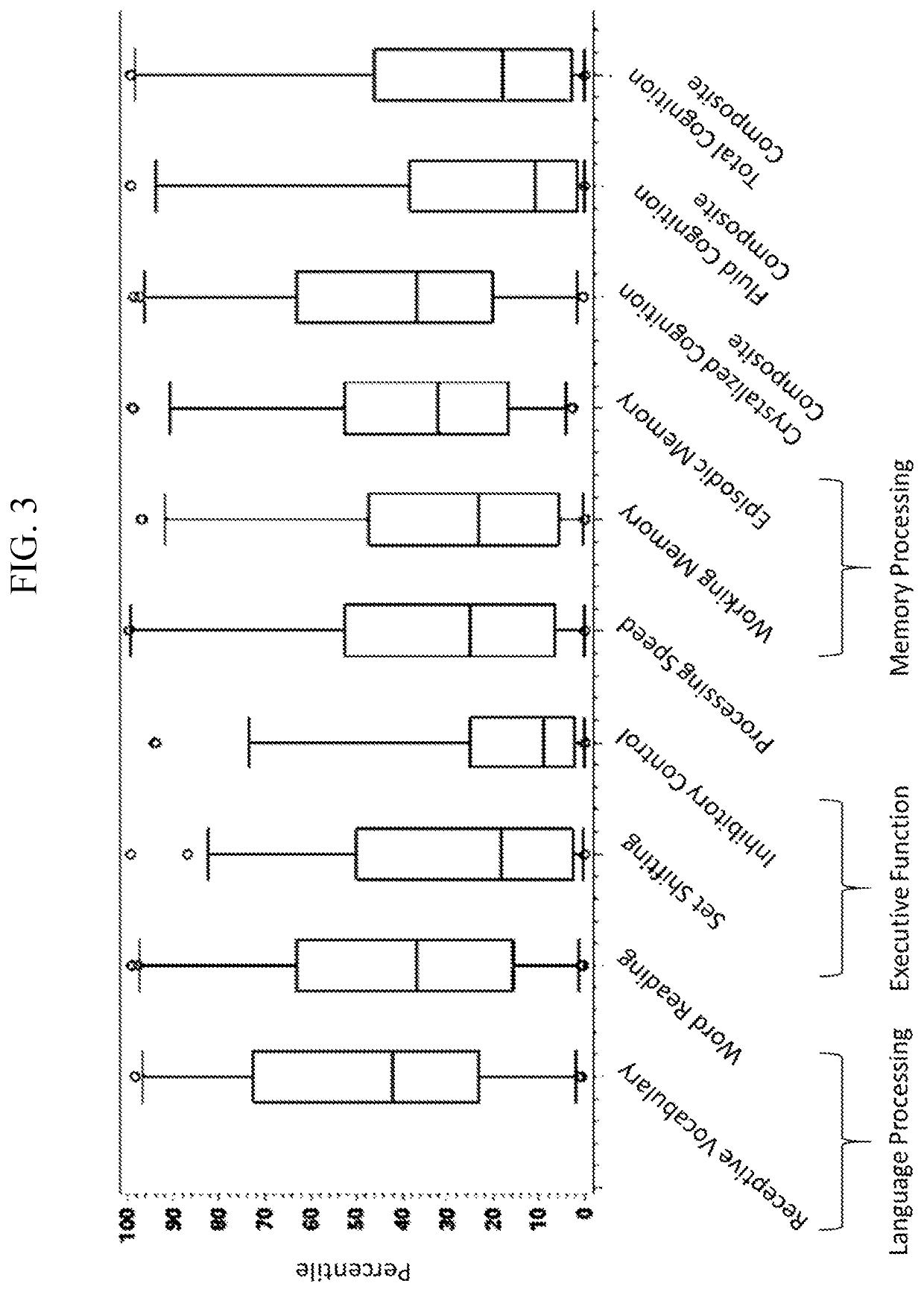Cystathionine beta-synthase enzyme therapy for treatment of elevated homocysteine levels
a technology of cystathionine betasynthase and enzyme therapy, which is applied in the direction of lyase, metabolism disorder, peptide/protein ingredient, etc., can solve the problems of increased risk of osteoporosis and/or bone fracture, and associated elevated total plasma homocysteine levels
- Summary
- Abstract
- Description
- Claims
- Application Information
AI Technical Summary
Benefits of technology
Problems solved by technology
Method used
Image
Examples
example 1
istory Study Overview and Patient Characteristics
[0448]CBS-HCY-NHS-01 is an ongoing, multicenter (8 sites), international, observational, prospective natural history study (“NETS”) of HCU that enrolled 55 pediatric (5-17 years of age) and adult (>18 years of age) patients to characterize the clinical course of HCU in patients under current clinical management practices over 3 years to understand how homocystinuria progresses over time and to identify new treatments for patients living with homocystinuria. CBS-HCY-NHS-01 explores the range of plasma concentrations of total Hcy (tHcy) and related sulfur metabolites, and the variability of the clinical sequelae of the disease. Interim analyses assessing patient characteristics, cognitive impairments, and skeletal abnormalities were performed. Observed patient characteristics are provided in Table 1.
TABLE 1Patient demographics and baseline characteristicsPatient characteristicPrevalence in all patientsAge at enrollment, median [range]21...
example 2
lmic Defects
[0450]Historically, patients have often been diagnosed due to ectopia lentis. In the largest retrospective survey conducted to date, 85% of HCU patients had developed this condition by the age of 20 (Mudd S H, et al. The natural history of homocystinuria due to cystathionine beta-synthase deficiency. Am J Hum Genet. 1985; 37(1):1-31). In contrast, only 19% of adult and 9% of pediatric patients in this managed population had this condition (see Table 2), suggesting that restricted diet, B vitamin and betaine supplement can be effective mitigators of ophthalmic defects despite underlying undertreated disease as evidenced by median plasma tHcy level.
TABLE 2Ophthalmic deficitsPediatricAdultAll Patients(5-17 years)(≥18 years)N = 55N = 23N = 32Any ocular deficit38(69%)16(70%)22(69%)Ectopia lentis / 8(15%)2(9%)6(19%)dislocation of the lensCataract6(11%)2(9%)4(13%)Retinal degeneration1(2%)0(0%)1(3%)Retinal pigmentosa1(2%)1(4%)0(0%)Hyperopia11(28%)7(30%)4(13%)Myopia25(63%)9(39%)16(...
example 3
ene Mutations
[0451]Analysis of mutations in the CBS gene of study participants showed 26 unique mutations identified in 48 patients, with 16 patients apparently homozygotes and 32 patients apparently compound heterozygotes. The DNA mutations and resulting CBS mutant proteins are shown in Table 3 using standard nomenclature for genetic mutations as described by Ogino, Shuji, et al. “Standard mutation nomenclature in molecular diagnostics: practical and educational challenges.” The Journal of molecular diagnostics 9.1 (2007): 1-6, the disclosure of which is incorporated by reference herein in its entirety. Genetically-defined HCU patients include patients having a mutation in the CBS gene, including but not limited to any of the mutations shown in Table 3.
TABLE 3Patient mutations in the CBS geneDNAProteinc.689delp.Leu230Argfs*39c.209 + 1G > Ap.(?)c.1126G > Ap.Asp376Asnc.752T > Ap.Leu251Glnc.808_810delp.Glu270delc.442G > Ap.Gly148Argc.536_553delp.Asp179_Leu184delc.700G > Ap.Asp234Asnc....
PUM
| Property | Measurement | Unit |
|---|---|---|
| Time | aaaaa | aaaaa |
| Time | aaaaa | aaaaa |
| Time | aaaaa | aaaaa |
Abstract
Description
Claims
Application Information
 Login to View More
Login to View More - R&D
- Intellectual Property
- Life Sciences
- Materials
- Tech Scout
- Unparalleled Data Quality
- Higher Quality Content
- 60% Fewer Hallucinations
Browse by: Latest US Patents, China's latest patents, Technical Efficacy Thesaurus, Application Domain, Technology Topic, Popular Technical Reports.
© 2025 PatSnap. All rights reserved.Legal|Privacy policy|Modern Slavery Act Transparency Statement|Sitemap|About US| Contact US: help@patsnap.com



